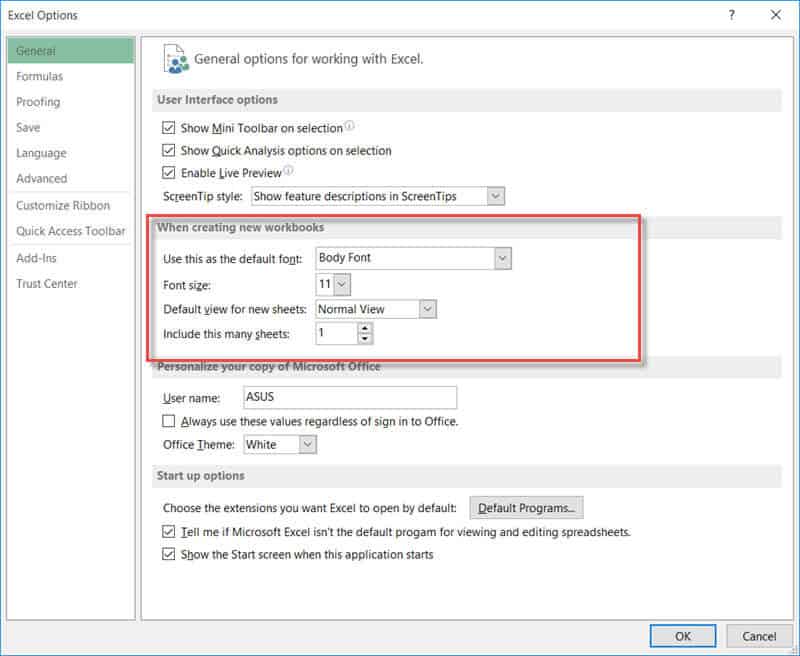
For example, when opening the Analysis ToolPak add-in gives you a new menu item on the Tools menu: Data Analysis. In many cases, however, the menu changes in some way - Excel displays either a new menu or one or more new items on an existing menu. When you open an add-in, you may or may not notice anything different. You can remove the add-in only by exiting and restarting Excel or by writing a macro to close the add-in. However, you can’t close an open add-in by choosing File Close.

You can open most add-in files also by choosing the File pen command. The Add-Ins dialog box lists all of the add-ins known to Excel. You can open and close add-ins from the Add-Ins dialog box by selecting or deselecting the check boxes. In this list, check marks identify any currently open add-ins. The list box contains the names of all add-ins that Excel knows about. This command displays the Add-Ins dialog box shown in Figure 22-1. The most efficient way to load and unload add-ins is by choosing ToolsO Add-Ins. When an add-in is closed, the user never sees the Save change in…? prompt. Add-ins can be opened automatically when Excel starts, regardless of the directory in which they are stored.Īvoid displaying prompts when unloading. After you identify the location of your add-in, it appears in the Add-Ins dialog box, with a friendly name and a description of what it does.

For example, if you store a custom function named MOVAVG in a workbook named NEWFUNC.XLS, you must use syntax like the following to use this function in a different workbook:īut if this function is stored in an add-in file that’s open, you can use much simpler syntax because you don’t need to include the file reference: Custom worksheet functions that you store in an add-in don’t require the workbook name qualifier. Unlike a hidden XLS workbook, an add-in can’t be revealed. If a user loads your application as an add-in, the file is invisible and therefore less likely to confuse novice users or get in the way. Excel’s protection features aren’t perfect, and password-cracking utilities are available.Īvoid confusion. If you use proprietary techniques in your VBA code, you can make it more difficult for others to copy the code. When you distribute an application as an add-in (and you protect it), casual users can’t view the sheets in the workbook. Make it more difficult to access your code. You might decide to convert your XLS application into an add-in for any of the following reasons: An add-in can have any extension that you want. However, this is not a strict requirement. However, you can access an add-in’s VBA Sub and Function procedures and display dialog boxes contained on UserForms.Įxcel add-ins usually have an XLA file extension to distinguish them from XLS worksheet files. Because add-ins are always hidden, you can’t display worksheets or chart sheets contained in an add-in. You can convert any XLS file into an add-in. The workbook is not a member of the Workbooks collection. The workbook window is hidden and can’t be unhidden using the Window Unhide command. The IsAddin property of the Workbook is True. More specifically, an add-in is a normal XLS workbook with the following differences: An Excel add-in is basically a different form of an XLS workbook file. You can also get Excel add-ins from third-party suppliers or as shareware my Power Utility Pak is an example.Īny knowledgeable user can create add-ins (but VBA programming skills are required). Some of the more popular include the Analysis ToolPak, Conditional Sum Wizard, and Solver.

If the add-in is designed properly, the new features blend in well with the original interface, so they appear to be part of the program.Įxcel ships with several add-ins. Some add-ins provide new worksheet functions you can use in formulas other add-ins provide new commands or utilities. An Excel add-in is something you add to enhance Excel’s functionality.
EXCEL ADD INS ON MAC COMPUTER HOW TO
In this chapter, I explain why this feature is so slick and show you how to create add-ins by using only the tools built into Excel. One of the slickest features of Excel - at least in my mind - is the capability to create add-ins.

Knowing why you might want to create your own add-ins


 0 kommentar(er)
0 kommentar(er)
